by Mike Gulett –
Another reason to dislike the transition to electric cars is we will see the demise of the air scoop on cars and certainly the beloved hood scoop will be gone. There is no need for a hood scoop to cool the engine of an EV like there is on an ICE vehicle. The importance of aerodynamics on an EV will kill off the air scoop, even a fake one like we used to see on ’60s and ’70s American cars just for looks.
Where there is a need for air flow, say into the cabin or to cool the battery or electric motor, it will be done in the most aerodynamic way possible, with the aid of electric fans, and likely will not be as cool looking as some of the old fashioned air scoops shown below.
Take a trip back in time below and appreciate what we once had.
Hood Scoops – Car Art With A Purpose
A hood scoop allows air to flow into the engine compartment either to help cool the engine or to deliver cooler air to the engine air intake which can improve performance because cooler air is denser than warmer air. And engines like denser air.
I am sure this Aston Martin DBS below has a happier engine because of the scoop.
The air in the engine compartment is warmer than the ambient air outside the car because of the heat produced by the engine.
In this Ferrari above the designers moved the velocity stacks outside the engine compartment and put a scoop around them. The velocity stacks feed air directly to the carburetors. So, not only does this improve performance but it looks really cool.
Notice the similarity between the design of the scoop above and the one below? The one above is on a modified Iso Grifo, perhaps the only Grifo with the hood scoop from an Iso Rivolta GT, below. More on the Iso Grifo hood scoop later on in this article.
Ram Air, branded by Pontiac, was an attempt to create something similar to supercharging without the complexity of supercharging.
The seals around the air intake, below, seal against the hood when it is closed forcing air from the scoop directly into the engine air intake.
Below is the scoop for the engine above on this classic Pontiac GTO.
Cowl induction hood scoops are placed facing the driver and are near the windshield like this Camaro below.
The Shaker Hood Scoop is built into the engine and protrudes through a hole in the hood. It is called a Shaker Hood Scoop because the scoop shakes when the engine is running because it is attached to the engine.
The hood in the Mustang Boss 302, below, has a hole that the scoop fits through when the hood is closed.
Car designers have taken many approaches to hood scoop design both for function and for pure looks.
The Alfa Romeo below has tiny scoops compared to the size of the hood. But it also has a large grille opening.
I think this Siata has a well proportioned scoop.
This Bizzarrini below has induction like scoops near the front of the hood and the hump near the windshield also allows air to flow into the engine compartment (a small cowl induction scoop). With the small size of the grille area this extra air flow helps with cooling. The two electric fans below the bumper in front of the radiator also help with air flow quite a lot.
Notice the size difference in the hood scoop between the small Datsun above and the big Ferrari V12 below.
Two scoops sitting side by side – is there a purpose or is this done just for the unusual look on this Dodge below?
I am not sure that the scoop on the Thunderbird below is functional. Some American designers back in the ’60s and ’70s put fake scoops on just for looks.
Dodge always went their own way in design; two scoops flared out to the side.
A Shaker Hood Scoop on a Hemi Cuda.
Below is a different look at the scoops on the Bizzarrini. The upper side vents, in front of the doors, allow air to flow out of the engine compartment.
The NACA Duct Air Scoop
The NACA duct air scoop is a low-drag air scoop of a uniquely different design that was developed in 1945 by the U.S. National Advisory Committee for Aeronautics (NACA) originally for airplanes. NACA later became the National Aeronautics and Space Administration (NASA).
The NACA duct brings air into a vehicle with minimal increase in drag. The NACA duct or NACA scoop is a common form of low-drag intake design, and when properly implemented, it allows fluid to be drawn into an internal duct, often for cooling purposes, with a minimal disturbance to the flow.
NACA ducts are useful when air needs to be drawn into an area which isn’t exposed to the direct air flow the scoop has access to. Quite often you will see NACA ducts along the sides of a car or engine bonnet. The NACA duct takes advantage of the boundary layer, a layer of slow moving air that “clings” to the bodywork of the car, especially where the bodywork flattens, or does not accelerate or decelerate the air flow. Areas like the roof and side body panels are good examples. The longer the roof or body panels, the thicker the boundary layer becomes (a source of drag that grows as the layer thickens too).
From the Technical F1 Dictionary.
Marcello Gandini of Bertone took a liking to the NACA duct and used it on the Lamborghini Espada, the Lamborghini Countach, the Alfa Romeo Montreal and other cars.
The NACA scoop on the Montreal above is a little different than the other cars shown here. Can you spot the difference?
The NACA duct was also used on the Ferrari F40 and on some Formula 1 race cars.
According to Hot Rod Network the NACA duct was not a success for jet airplanes but has worked out well for cars.
Not only is the NACA scoop efficient (low drag) I think they look great too.
The Iso Grifo Has The Most Unusual Hood Scoop Ever
Now for something completely different – the Iso Grifo hood scoop designed for the big block engines is the most unusual, and maybe the most (in)famous hood scoop in the classic car world.
When Iso decided they wanted to put the Corvette 427 cid engine in the Grifo, which had an engine bay designed for the 327 cid, they needed extra space in the vertical direction.
The result was this hood scoop above. The car was branded the Iso Grifo 7 Liter and later the Chevrolet 454 engine version was also available in the Can Am model.
As you can tell it is not exactly a scoop but it serves the same purpose in addition to allowing a larger engine to fit without modifying the engine bay.
When Iso stared using the Ford 351 engine the scoop became a little taller than on the 7 Liter model as you can see in the pictures below.
Over the years this hood scoop has become famous in the classic car world and people usually either hate it or love it. I love it, but it is note worthy that no other car company has copied this “pagoda” style as far as I know.
Below is the sales brochure for the Iso Grifo 7 Liter.
Below is the Iso Grifo A3/L Prototype. I had wondered why Iso didn’t use this elegant hood scoop style for all Grifo models?
I asked Piero Rivolta that question once and he said that hood scoops were expensive so the Grifo GL model (small block engine) has a small bulge rather than a scoop.
Let us know what you think in the Comments.
All photos by Mike Gulett, unless otherwise indicated.


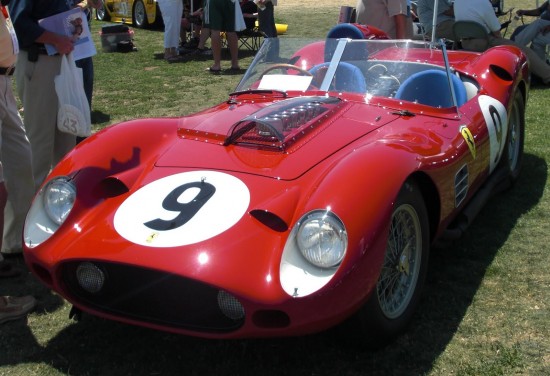


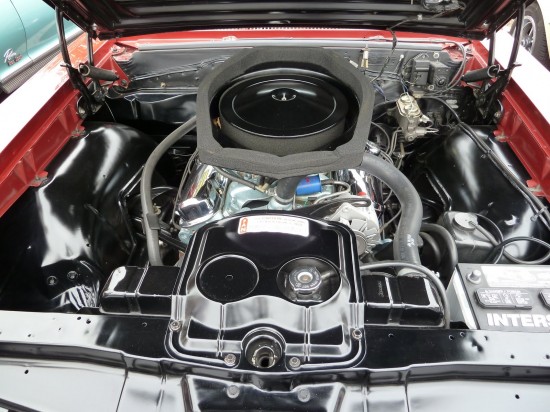
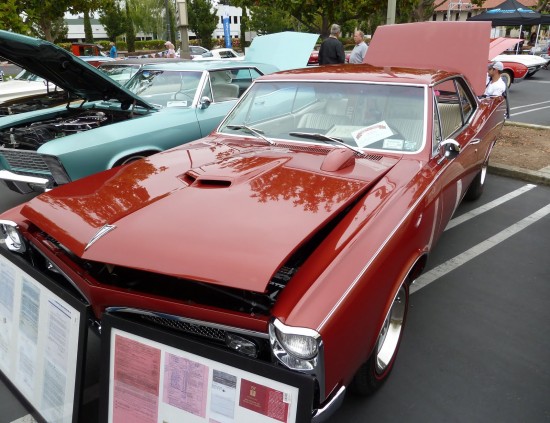


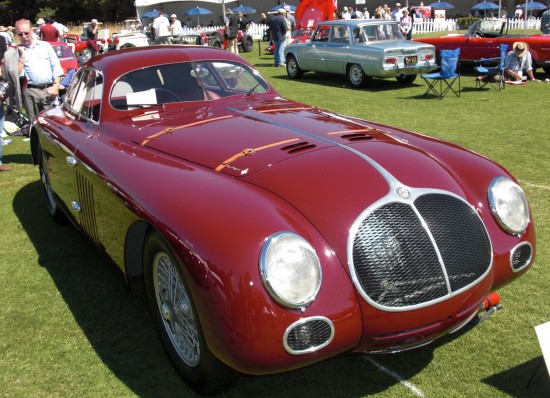
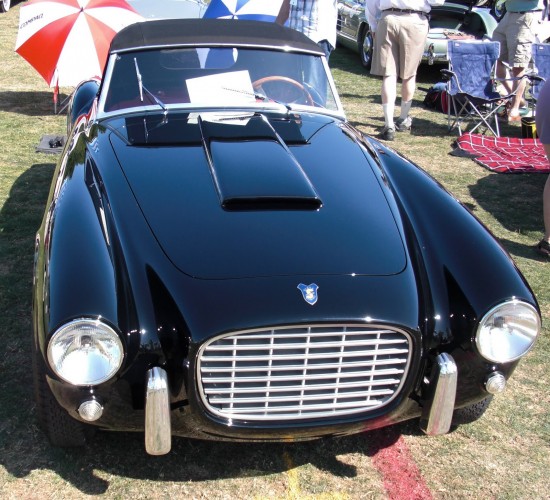
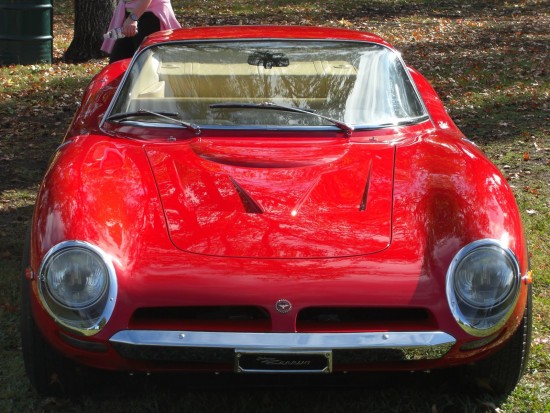


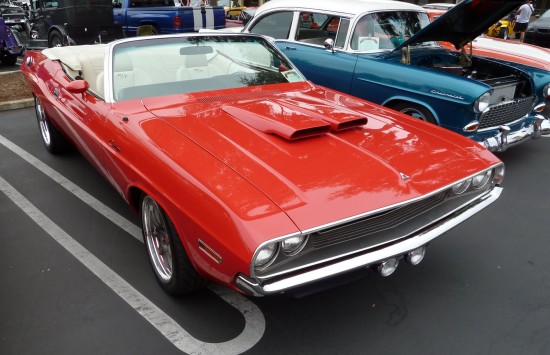
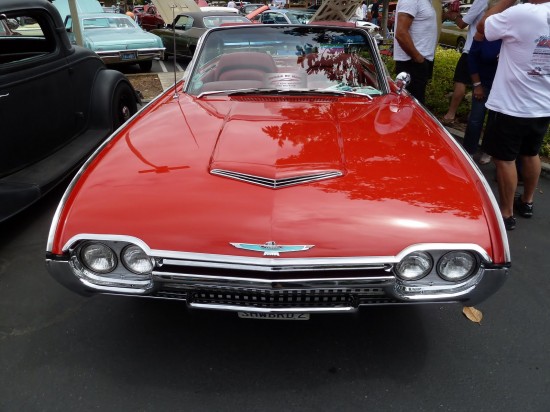
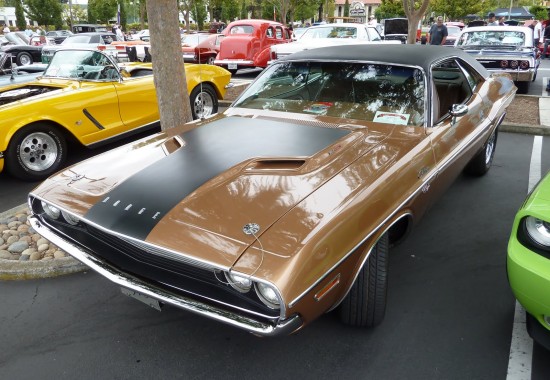
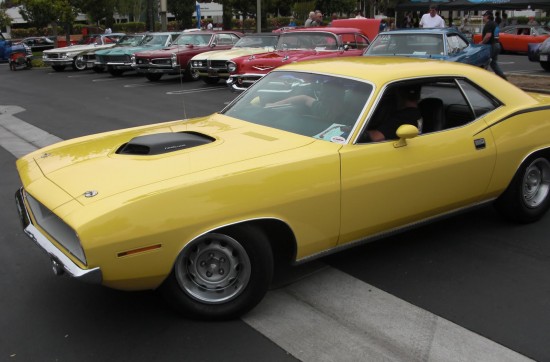

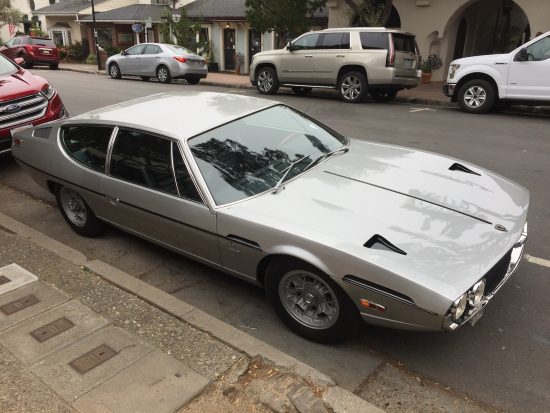
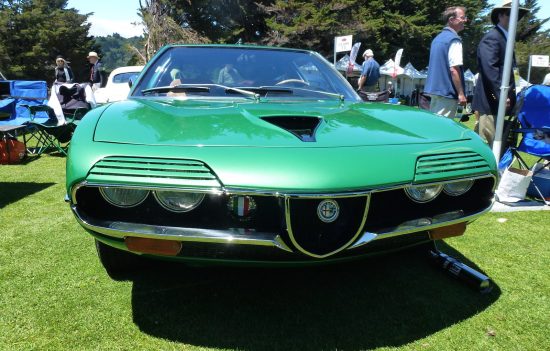
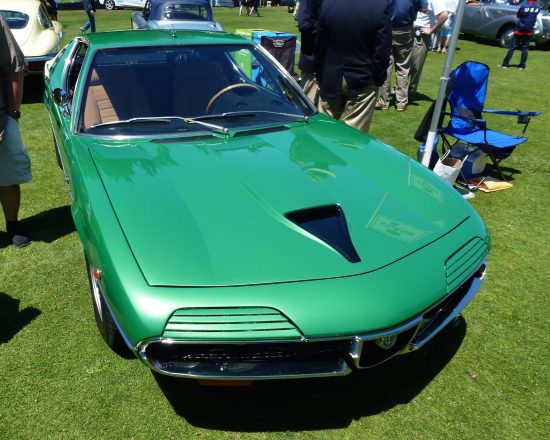
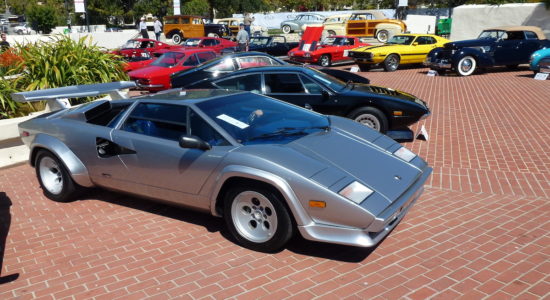
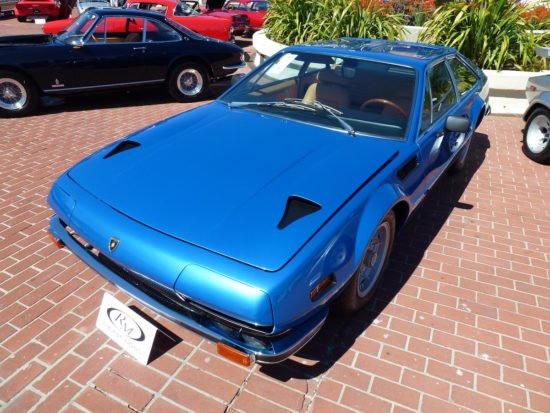

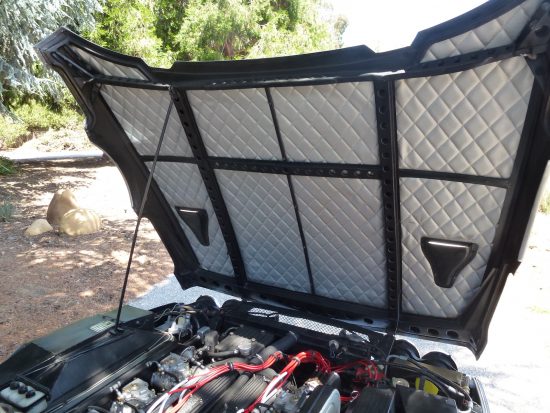
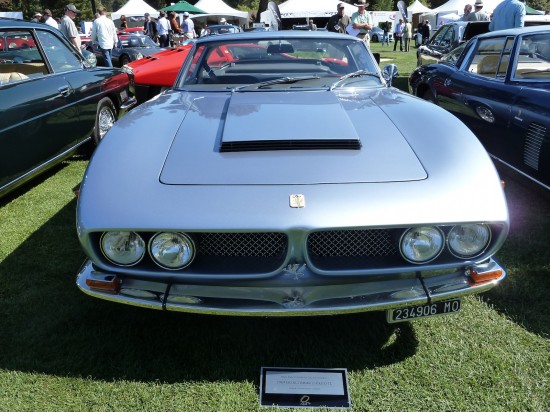
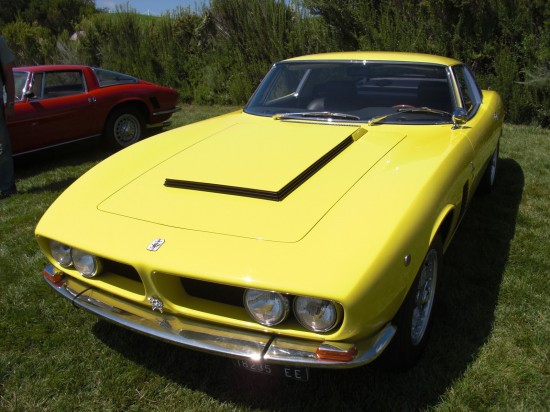

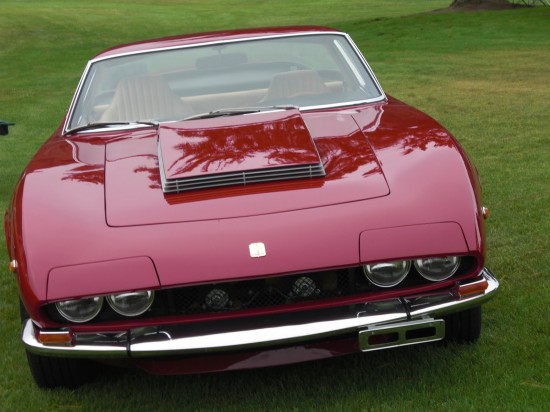
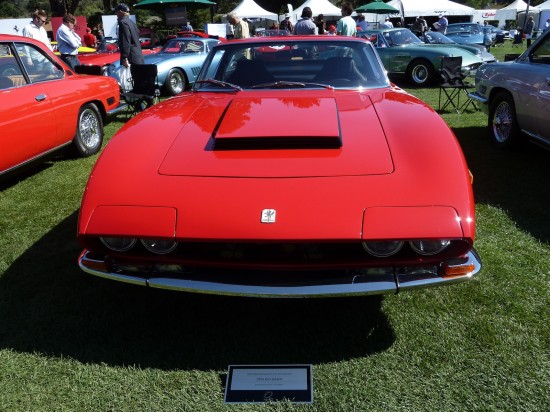
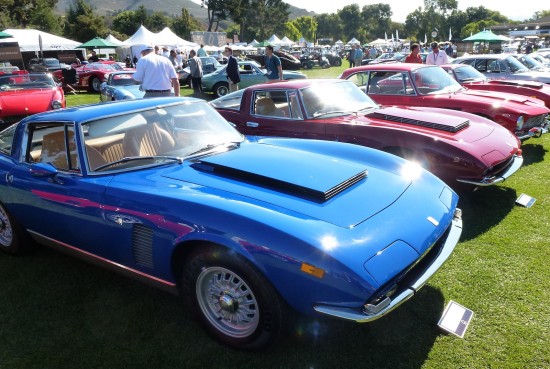

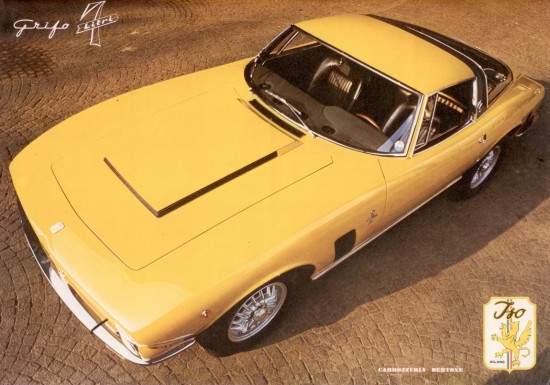
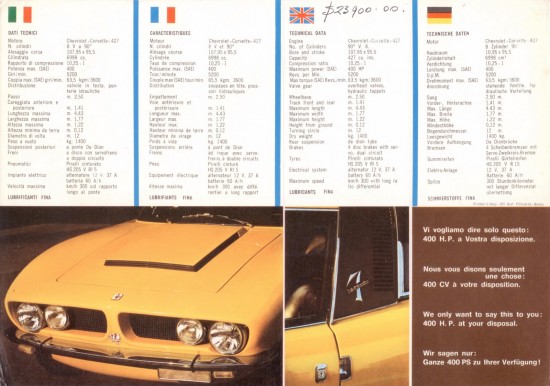
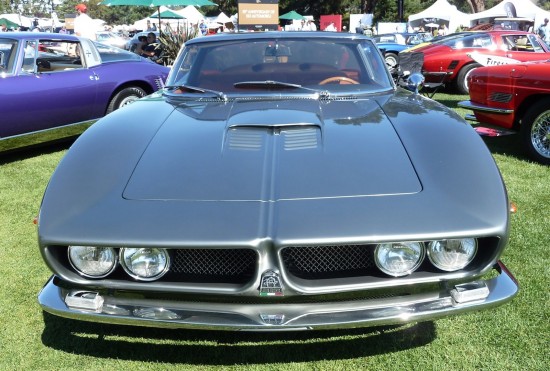
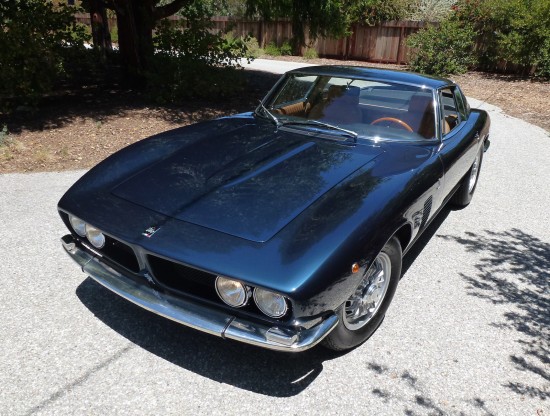
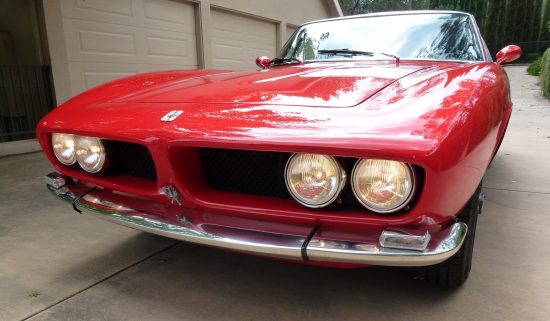


Don’t get me started on EVs
Give up living, buy an electric car.
How about we lose the ugly electric cars and keep the classic styles of the ICE cars. Its odd that the people who like internal combustion don’t force their agenda on the EV world, but the EV fanatics sure want the whole world to change to their way of thinking.
Notice how all the beautiful cars shown not only have hood scoops, but also have gorgeous front grills. Front grills add style and character to a car, while also functioning to force air through the radiator to cool the internal combustion engine. EVs do not need a front grill, and the latest Tesla does not have one, and as a result, the front end is completely ugly. Glenn in Brooklyn, NY.